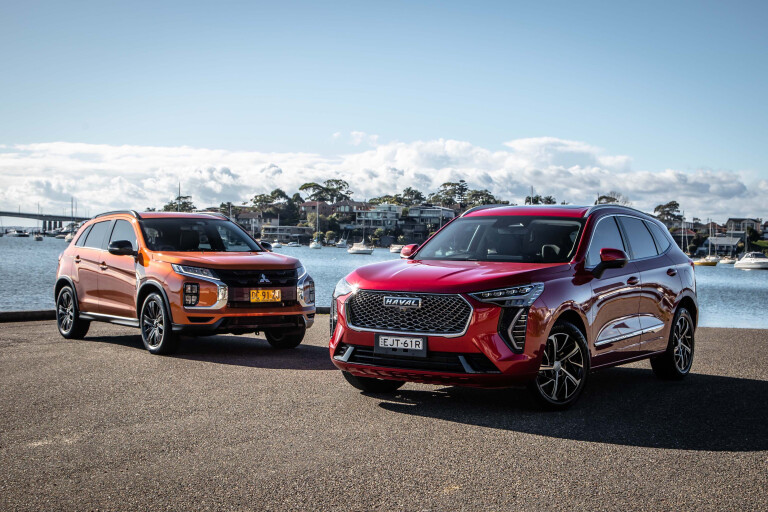
Not all compact SUVs are made equal. Some look amazing, some are loaded with tech, some are more fun to drive, some are dirt cheap and feel it. They come from just about every major car-making country on Earth, too, such is their popularity.
Here we have two seemingly similar competitors. They’ve got two of the biggest interiors in the segment and are two of the sharpest-priced. Dig a little deeper, though – you knew this was coming – and you’ll find a few differences.
One of the most intriguing differences is that one has been on sale for just a year. The other one is probably a year or so from being replaced after more than a decade on the market, having been a hot seller for a good chunk of that decade.
The price here is the key, though, with the Haval Jolion and Mitsubishi ASX priced seemingly against each other in a fiercely fought part of the market. This is the battle of two bang-for-your-buck SUVs.
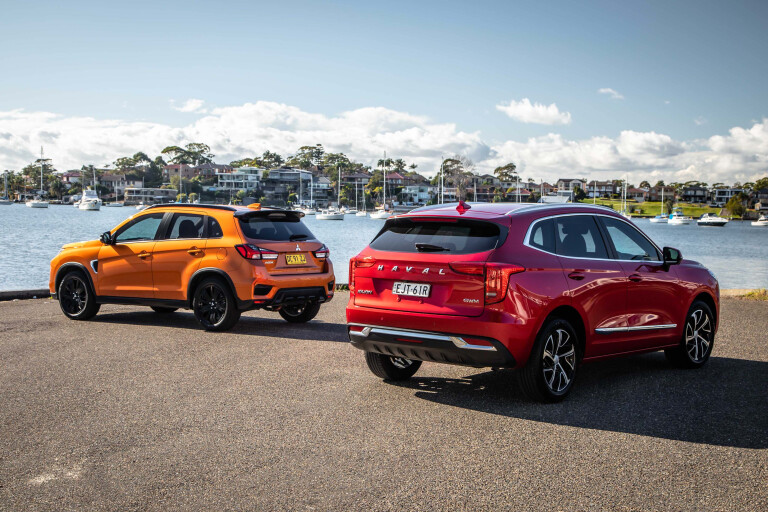
Pricing and features
The ASX GSR starts off with a $31,990 price tag (before on-road costs). The GSR is a fairly recent entry in the ASX line-up, reviving an old badge first seen forty years ago on the Lancer. For nerd points, the ASX is based on the platform of the final Lancer first sold here in the mid-2000s.
Featuring 18-inch alloy wheels, a six-speaker stereo, climate control, reversing camera, keyless entry and start, rear parking sensors, cruise control, auto LED headlights with auto high beam, leather wheel and gear selector trim, power windows all round, auto wipers and a space-saver spare, it’s not a bad start.
The Haval Jolion Lux rolls in at $33,990 drive-away, with 18-inch alloys, reversing camera, multi-view cameras, front and rear parking sensors, fake leather trim, digital dash, 12.3-inch touchscreen, dual-zone climate control, powered and heated front seats, leather-trimmed steering wheel, LED lighting (including headlights, daytime running lights and fog lamps), six-speaker sound system, panoramic sunroof, wireless charging pad, head-up display and a space-saver spare.
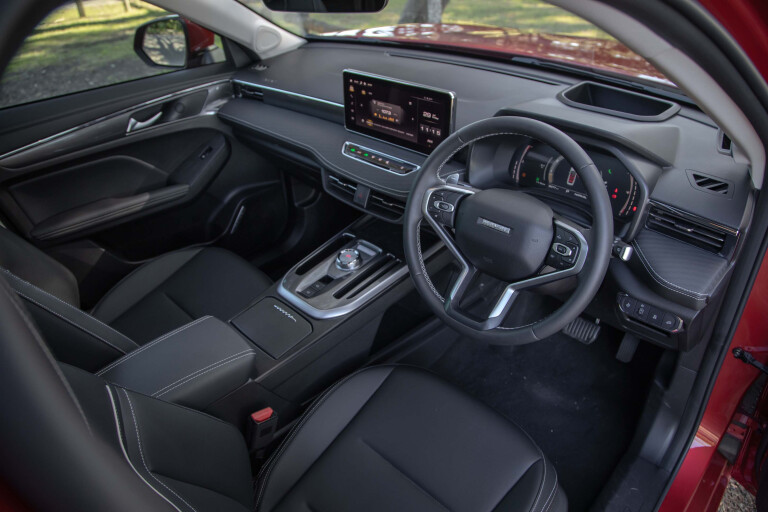
Both feature touchscreens but they couldn’t be more different. The Mitsubishi’s is a basic 8.0-inch unit with a mix of touch and physical controls, with the obligatory Apple CarPlay and Android Auto along with DAB+ digital radio. And not much else.
The Jolion’s 12.3-inch unit is a modern beast, with lots of features packed in at the expense of a lot of physical switches and knobs, such as climate control. It’s absolutely filled with settings and functions, some of which are perfectly at home, some that really should be easier to get to, easier to use or properly positioned for a right-hand drive car, like the seat heating controls.
Overall, specifications are where you really notice the age gap between the two cars. The Jolion is packed with contemporary technology for similar money.

On the safety front, the ASX has seven airbags (including a driver’s knee airbag), blind-spot monitoring, forward auto emergency braking (up to 80km/h), forward collision warning, lane departure warning and rear cross-traffic alert.
The Jolion matches the seven airbags but the seventh is a centre-front airbag to help prevent head clashes in side impacts. It also has the usual braking and stability controls, secondary collision avoidance, forward and reverse AEB, rear cross-traffic alert, forward collision warning, lane departure warning, lane-keep assist, lane centring, emergency lane-keep assist, traffic sign recognition and blind-spot monitoring with lane-change assist, further underscoring the Jolion’s comparative modernity.
Both have three top-tether anchors and two sets of ISOFIX points.

A five-star ANCAP safety rating adorns the ASX, although it does stretch back to 2014. The safety specification has drastically improved on the Mitsubishi since then but today's much tighter set of ANCAP rules make it unlikely that the ASX would renew a five-star rating. It’s not a bad spec, but as the Jolion – and other rivals show – it’s a solid start.
The Jolion is yet to be tested by ANCAP but with that very long list of features and the centre front airbag, it would be wholly unsurprising if the Haval scored the maximum rating, as its larger and closely related H6 sibling did.
Buyers of both can choose from just one free colour, white. While a Mitsubishi dealer wants a hefty $740 or $940 for metallic paint depending on the colour, the Haval dealer will instead try and extract a more reasonable $495. Neither has any factory options.

Comfort and space
Where these two really shine is in interior space.
The ASX has a textile suede and fake leather upholstery combination that looks a lot better than it sounds. Apart from being quite comfortable – particularly in summer when the suede panels won’t scorch you as much as leather does – it looks quite good and matches the darker theme of the GSR. I personally prefer this upholstery but that’s definitely a subjective call.
The interior design of the ASX is very simple and completely unadventurous. There’s a lot of hard plastic in the structures and, once again, it shows the age of the car.
In the Jolion you have great swathes of fake leather not only on the seats but on the dashboard. The Jolion has a more interesting mix of materials than the Mitsubishi, although grey plastic dominates both.
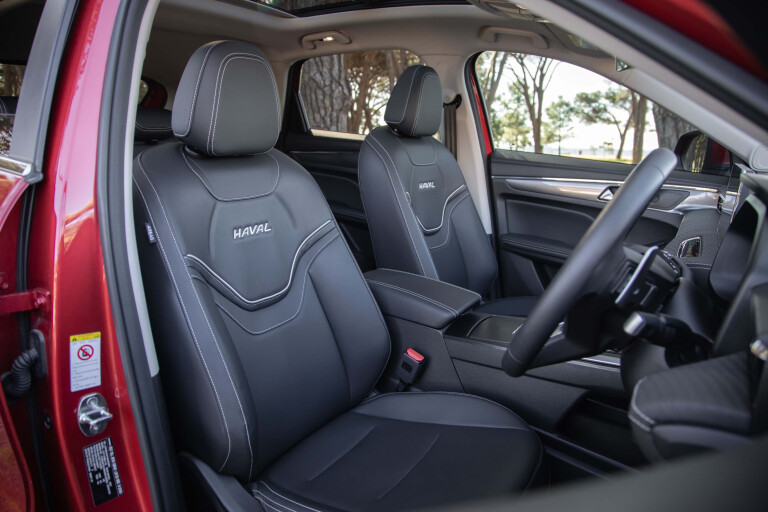
Both feature cup holders in the front and rear, bottle holders in the front doors (the Jolion also has them in the rear) and places for your phone in the front. You also get two USB-A ports up front in both and two USB ports in the back, although the ASX has the more modern USB-C, unsympathetically cut into the vent-free console.
The Jolion counters with air vents, a near-flat floor and, despite the ASX having a pretty good helping of legroom, the Haval trounces it. Both have heaps of headroom, too, but the Jolion’s cabin is slightly wider than the ASX’s.

In terms of boot space, Haval again shades Mitsubishi, with 433 litres against 393L. In practice, that’s not a huge amount of difference and if you had them side by side, you’d think they were basically the same.
With the seats down, the Jolion’s 1133 litres is actually slightly smaller than the ASX’s 1143L, but again, you’re hardly going to notice. So we can call boot space even, back seat accommodation goes to the Jolion and overall accommodation also goes to the Haval.
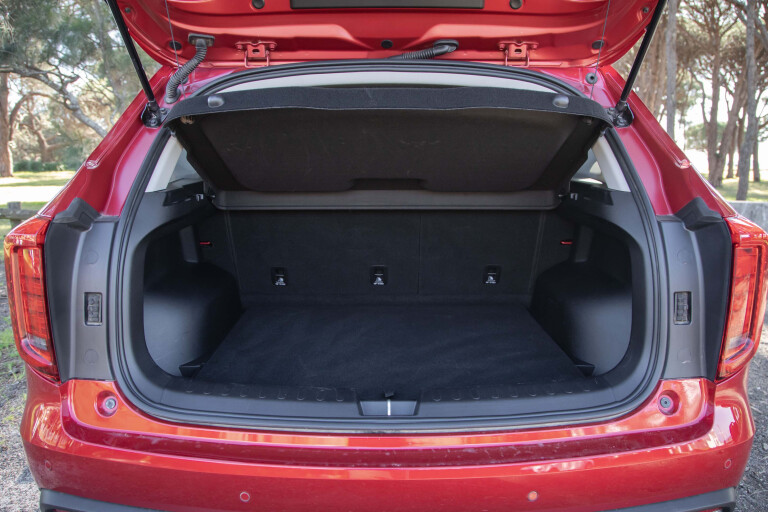
On the road
As I said earlier, these two cars are at opposite ends of their lifecycle. The ASX stretches right back to the mid-2000s Lancer platform while the Jolion rides on GWM’s very modern if unfortunately titled Lemon B30 platform. Like the ASX, the platform is shared with other cars, in this case, the H6 and tremendously named Big Dog, a car we don’t get in Australia.
The two cars diverge markedly under the bonnet. Mitsubishi’s venerable 2.4-litre four-cylinder petrol is the more powerful of the two with outputs of 123kW and 222Nm. With an automatic continuously variable transmission (CVT) turning the front wheels it’s a fairly low-drama, tried-and-true kind of driveline.
Under the Jolion’s bonnet is a 1.5-litre turbocharged four-cylinder petrol producing 110kW and 210Nm, driving the front wheels through a seven-speed dual-clutch transmission. All very modern and a lot more complex but, unusually, that hasn’t resulted in higher servicing costs, at least not for the first five years.
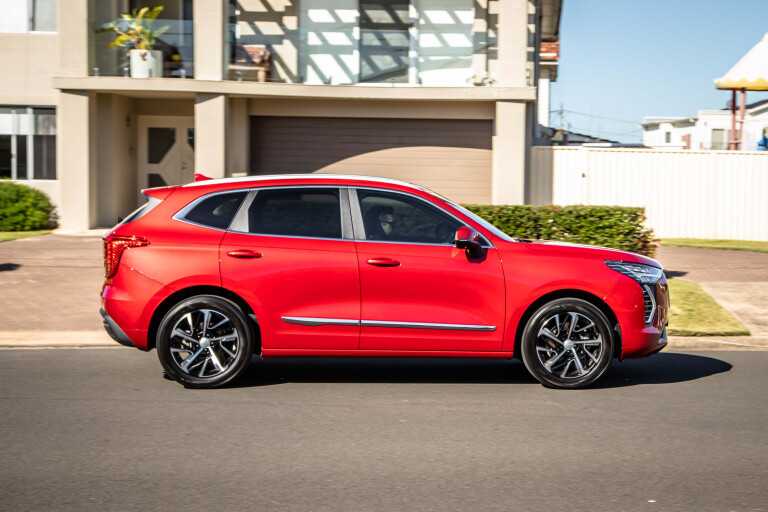
Unfortunately for the Haval, modernity does not translate into superior driveability. The engine itself seems reasonably flexible but it’s hard to tell through the vagaries of the seven-speed dual-clutch.
I’m a big fan of the slick rotary dial selector – something I never say because most of them aren’t very good – but the clutch engagement from a standstill or switching between Drive and Reverse is not very slick at all.
The gearbox is also not very adept at picking the right gear when you’re driving around the suburbs, holding third until you either pull the paddle or give the accelerator a prod in the way your partner might use their elbow when you say the wrong thing at dinner.
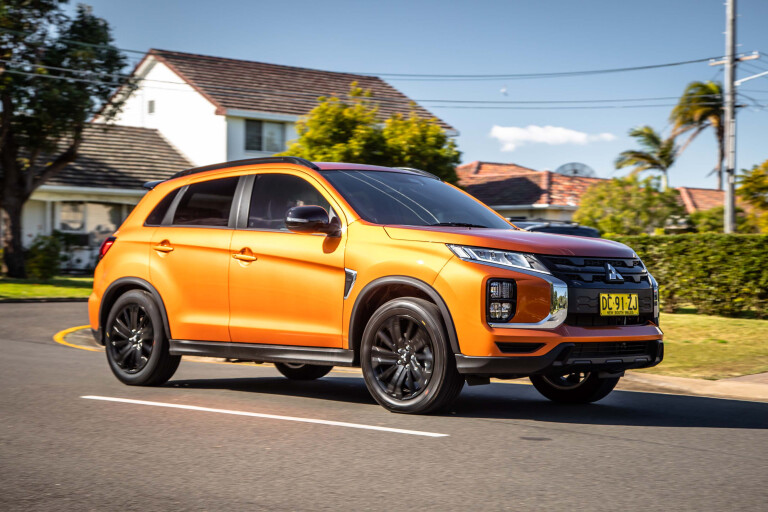
Helpfully, the Jolion recovers some ground by having a smoother ride, although it’s not quieter. With torsion beam rear suspension, it doesn’t look better on paper than the ASX’s multi-link rear, but there’s quite a gap between the ride quality of the pair.
The ASX bumps around on less-than-perfect surfaces and dislikes speed bumps whereas the Jolion sounds like it should be bumping around but doesn’t.
Both have similarly low-communication steering set-ups, the ASX’s wheel in particular not helped by being slightly too small for my liking (not everyone agrees). Both handle corners quite well and neither body rolls excessively but if you’re a keen driver, you’re not going to get too excited here.
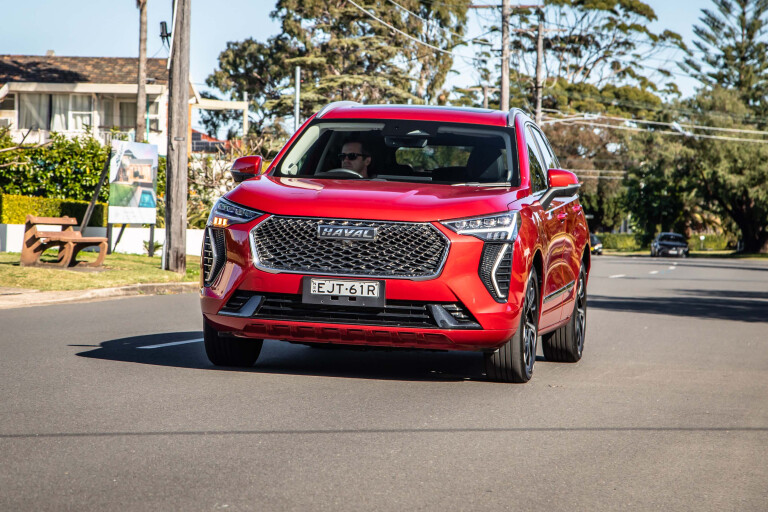
Where the Jolion’s drivetrain is awkward and occasionally shunty, the equally uninspiring-sounding ASX’s naturally-aspirated four-cylinder is better served by its continuously variable transmission. The CVT itself isn’t the peak of high technology but wrangles the kilowatts and Newton metres with considerably more decorum.
It seems to have improved over the years, too, with a little less flaring and a very positive pick-up from the lights (which sometimes means a wriggle of torque steer).
The ASX’s comparatively big-banger results in a higher real-world fuel consumption number than the Jolion’s. The official number of 7.9L/100km for the Japanese car has always seemed unattainable to me, having never got less than 12L/100km in nearly a decade of driving ASXs.
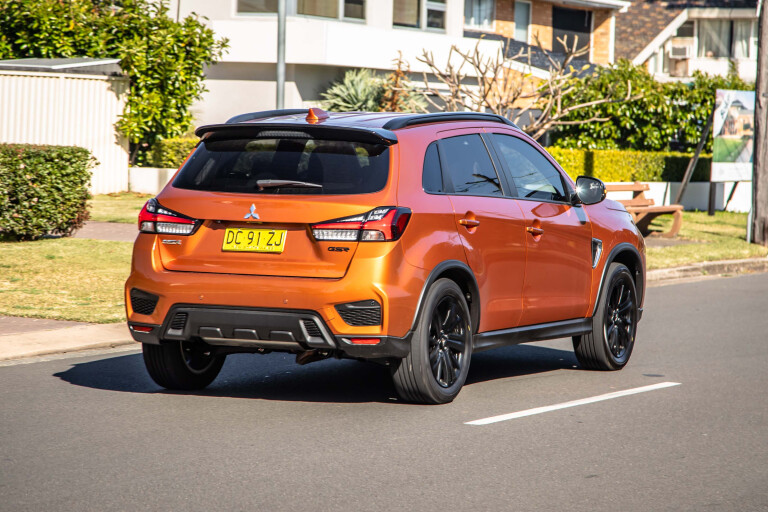
This time around I made it, but only by a solitary tenth of a litre, with 11.9L/100km.
I’d like to be able to compare the Jolioin’s 8.1L/100km figure against the real-world figure, but it’s impossible to find the average figure in the trip computer because, as I discovered in the Lux I drove last year, the steering wheel buttons don’t provide the ability to scroll through the on-screen information.
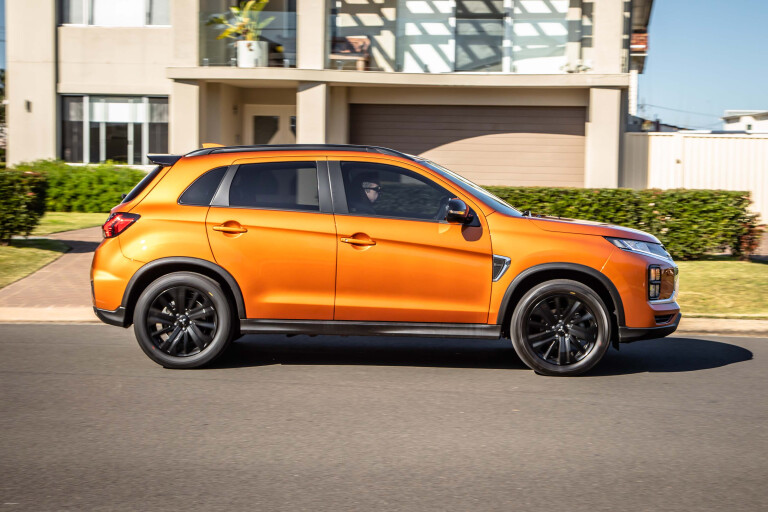
Ownership
Haval sends its cars out with a seven-year, unlimited-kilometre warranty, which is up there with Kia and beaten only by Mitsubishi’s ten-year warranty. There’s a five-year roadside assist package to go with it.
Also lasting five years is the capped-price servicing program. The first service arrives at 12 months or 10,000km but subsequent services stretch to 12 months or 15,000km.
The total for the first five services comes out at $1550 or an average of $310 per visit.
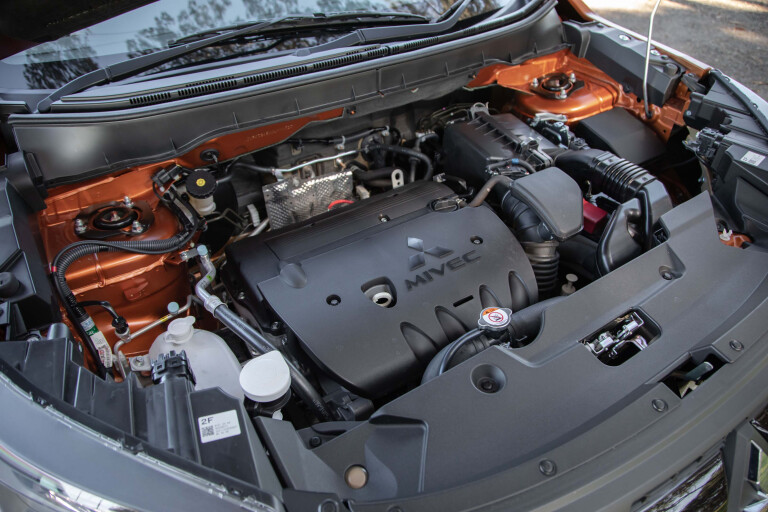
Mitsubishi’s headline ten-year/150,000km warranty beats all-comers. If you do crack the 150,000km limit, the warranty reverts to a five-year, unlimited-kilometre warranty, which is still good going if merely the current industry standard.
To go with the ten-year warranty is a ten-year capped price servicing program. For most of your visits – which come around every 12 months or 15,000km – you’ll pay $299. The sixth, eighth and tenth services jump to $599 each.
Over the decade of the program (that really is a very long time), that works out to $3890 or $389 per service.
While Mitsubishi’s program is longer, the Haval’s is narrowly cheaper for the first five years, so that’s worth considering if you don’t intend to keep your car for a long time.
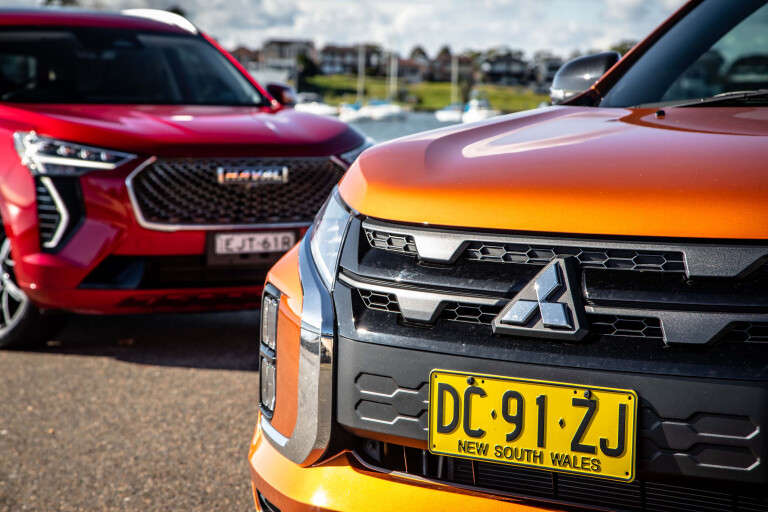
VERDICT
The Haval takes a narrow victory but both of these cars share the same, solid values: sharp pricing, plenty of equipment and a whole of space for you and your things.
If the Jolion Lux were here, the gap would probably be slightly wider in favour of Haval as its smaller wheels result in a quieter ride and you’re not losing much from the Ultra’s spec list, at least not much that matters. And it’s cheaper. But it’s the Ultra we’re looking at here.
On the other side, the ASX GSR is probably the best-value ASX and the best-looking with its black pack theme. An unbeatable warranty ensures it closes the gap on the Jolion, along with a friendlier engine and transmission combo.
The ASX is still selling well and continues to beat the Jolion comfortably with its far more familiar badge.
But the Jolion’s victory in this test comes down to a bigger and better cabin, better ride and handling and comprehensive safety and technology package without the significantly bigger price.

SCORING
Haval Jolion Ultra: 7.7/10
What we like
- Solid cost of ownership
- Heaps of gear
- Huge interior
Not so much...
- Noisy ride
- Dash and media software lack polish
- Dithery gearbox
Mitsubishi ASX GSR: 7.3/10
What we like
- Huge inside
- Looking good in its old age
- Long warranty and servicing program
Not so much...
- Uninspiring drive
- Bitty interior
- Fuel economy
| Haval Jolion Ultra | Mitsubishi ASX GSR | |
|---|---|---|
| Body: | 5-door, 5-seat small SUV | 5-door, 5-seat small SUV |
| Drive: | front-wheel | front-wheel |
| Engine: | 1.5-litre four-cylinder turbo-petrol | 2.4-litre naturally-aspirated four-cylinder petrol |
| Transmission: | seven-speed dual-clutch | continuously variable |
| Power: | 110kW @ 5600-6000rpm | 123kW @ 6000rpm |
| Torque: | 210Nm @ 2000-4400rpm | 222Nm @ 4100rpm |
| Bore stroke (mm): | 84.7 x 75 | 83.0 x 97.0 |
| Compression ratio: | 9.3 : 1.0 | 10.5 : 1.0 |
| 0-100km/h: | 11 sec (estimate) | 11 sec (estimate) |
| Fuel consumption: | 8.1L/100km (combined) | 7.9L/100km (combined) |
| Weight: | 1400kg | 1398kg |
| Suspension: | MacPherson strut front / torsion beam rear | MacPherson strut front / multi-link rear |
| L/W/H: | 4472mm/1841mm/1619mm | 4365mm/1810mm/1640mm |
| Wheelbase: | 2700mm | 2670mm |
| Brakes: | Ventilated disc front / solid disc rear | Ventilated disc front / solid disc rear |
| Tyres: | 255/55 R18 Kumho Solus | 225/55 R18 Bridgestone Ecopia |
| Wheels: | 18-inch alloy (space-saver spare) | 18-inch alloy (space-saver spare) |
| Price: | $33,990 drive-away | $31,990 + on-road costs |



COMMENTS